Remote employment is now commonplace in the age of disrupted workplaces and is often chosen by employees. This is a result of the workers’ newfound freedom to work whenever and whenever they choose. However, this amazing flexibility also presents a number of difficulties and problems with juggling work and personal obligations while continuing to be extremely productive. Employee tracking software, among other cutting-edge technological solutions, may be the solution workers need to preserve a healthy and productive work environment.
The Advantages of Working From Home
Working remotely has several benefits, going beyond saving money on transportation and avoiding traffic. It gives workers the freedom to design their own workspaces and timetables, which improves wellbeing and job satisfaction. This flexibility can help employees achieve a better work-life balance by enabling them to plan their work around their personal obligations and lives. However, a flexible work environment also presents a unique set of difficulties. Distractions from work or life in general may be found everywhere, and working parents are no exception. In remote work environments, it is easy for the boundaries between work and personal obligations to become blurred, which can result in excessive effort or a sharp decline in productivity. Using efficient employer monitoring software, you can monitor employee performance and productivity to help your remote teams stay highly productive and satisfied. This will help them maintain a healthy work/life balance and high levels of efficiency.
Sustaining Efficiency in a Distant Setting
In addition to building a strong technology stack to facilitate the effectiveness of remote teams, you may employ practical tactics to guarantee high productivity under flexible work schedules. Establish clear direction and employee accountability by first defining goals and expectations. To keep the team cohesive and make sure that everyone is on the same page regarding the goals of the organization, arrange regular team meetings.
More significantly, desktop monitoring software provides insightful data about how staff members use their working hours. Although this may seem intrusive to some, if used responsibly and openly, it can assist staff in identifying areas where they could increase their productivity. Employers and employees can discover ways to improve productivity without compromising the advantages of remote work by monitoring work patterns.
Problems and Solutions
There are special challenges as well as great rewards to working remotely. The productivity and mental health of remote workers are immediately threatened by overwork and burnout, which is why you should insist on having specified work hours and encourage staff members to take regular breaks and look out for their health.
Simplifying communication within remote teams is one of the biggest obstacles to be addressed. Your remote workers may feel excluded due to misconceptions and misinterpretations resulting from the lack of face-to-face interactions. Using video conferencing software for meetings and setting up online communities for socializing and cooperation are two ways to address this problem.
Your first concern when working remotely should be safeguarding your sensitive data. Because employees may use unprotected networks, remote workers’ PCs are more vulnerable to cybercriminal attempts and a higher risk of data breaches. Employers can reduce this risk by offering secure VPNs and regularly educating staff members about cybersecurity.
In Summary
It’s difficult to strike a balance between the demand for productivity and the flexibility of remote work; the appropriate tools and careful planning are needed. You may support your staff in thriving in a remote work environment by establishing clear expectations, encouraging communication, and leveraging technology like employer monitoring software. It’s critical to continue being flexible and receptive to new ideas in order to retain productivity while making sure that your staff members are content, well-being, and engaged as remote work develops.

